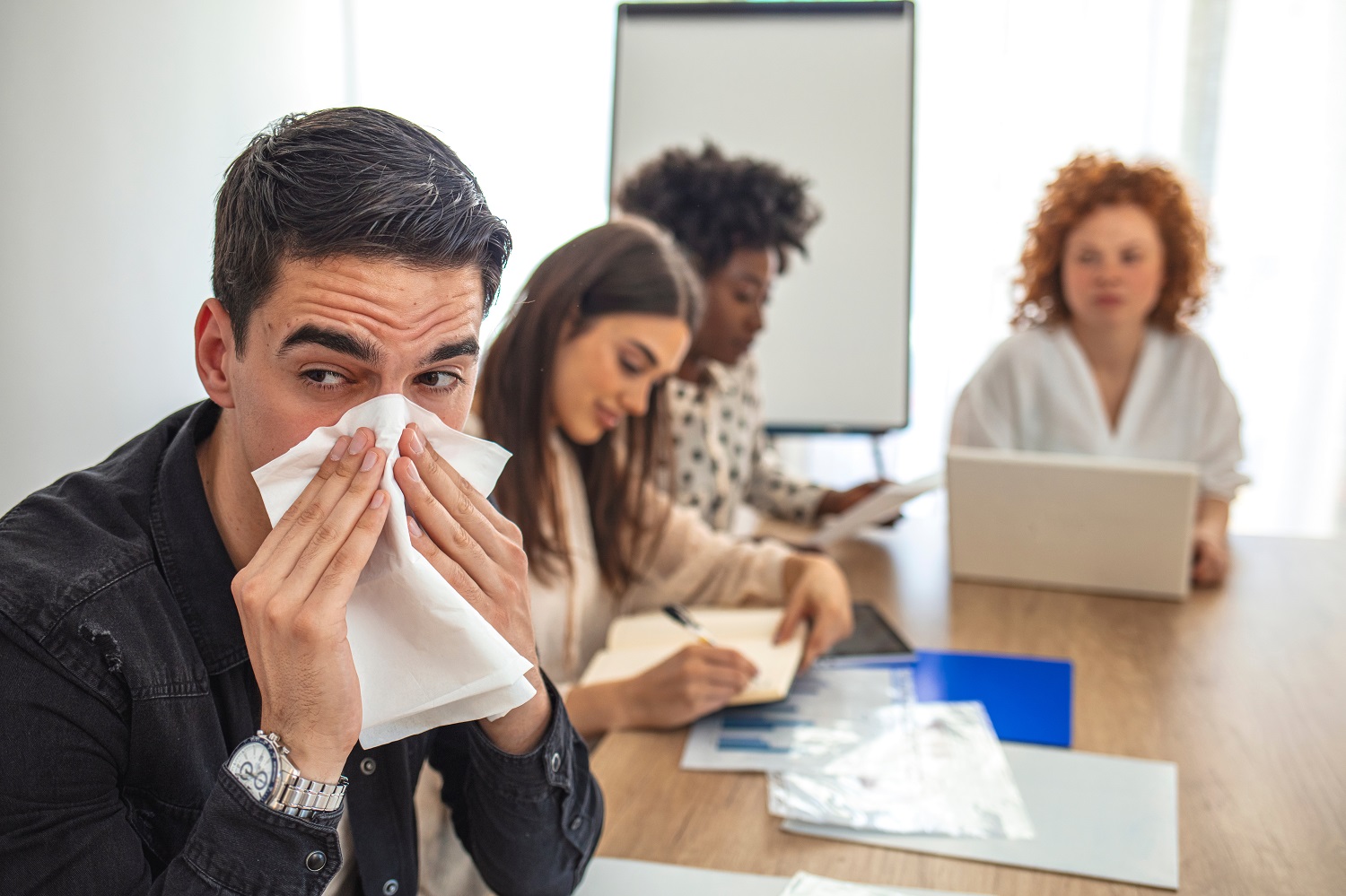High IAQ is essential for employee health and productivity.

IAQ is a major cause of ‘sick building syndrome’ that costs the Australian economy billions in lost productivity.
Largely dismissed pre-COVID, Indoor Air Quality (IAQ) is now a hot topic. In addition to the COVID-19 threat, another significant factor of IAQ is its impact on workforce productivity and wellbeing. In 2019, it was estimated that poor indoor air quality costs the Australian economy $12 billion annually in lost productivity. 1 Indeed, it is a major cause of ‘sick building syndrome’.
While ventilation and HVAC systems play a vital role in managing the air quality in our workplaces, the role of the cleaner also plays an essential part.
In an article in the September-October Inclean Magazine (p.56), GJK comments on cleaners’ contribution to IAQ. The below blog extracts information from our recent Whitepaper, and closely examines the ways your cleaning provider can help improve your building IAQ for the better health and productivity of your workforce.
Low VOCs and Fragrances
Chemical pollutants can affect workplace productivity, causing impaired concentration, decision making and performance and, it can lead to higher absenteeism from asthma or lung disease. A significant source of indoor pollution is from volatile organic compounds (VOCs) emitted from many common disinfectants, solvents, glass cleaners, sealants and fragranced cleaning agents. Your cleaning provider should be using products certified to Third Party Standards that contain low or no VOCs.
An even better option is chemical-free cleaning. There are many cleaning technologies on the market that clean with just water, such as microfibre cloths or systems that convert tap water to cleaning agents. For example, GJK is introducing Z-Water into its contracts, where water is electrolyzed to a purified pH12.5 ionised alkaline water and becomes a powerful cleaning agent. “Chemical-free cleaning technologies and microfibre should be used wherever practicable to ensure better air quality,” says Elias Stamas in the article, “Cleaning companies should also use low or no-scented cleaning products with little to no phosphorus content and increase ventilation in washrooms to reduce the use of air fresheners.”
Dust and Mould Control
Naturally occurring substances can also pollute the air and be harmful to health, such as dust, mould, fungi and bacteria. This can lead to eye irritation, asthma and upper respiratory symptoms. More disturbingly, recent studies show that dust can carry influenza and SARS-CoV-2 (coronavirus) virus particles.2,3
Your cleaning provider should be incorporating damp dusting into its practices to safely remove dust and mould. Damp dusting will hold the dust in the tool and fully remove it, whereas feather dusting will only move the dust around and re-aerosolise it.
It is also important that your cleaners are working with vacuum cleaners fitted with High Efficiency Particulate Air (HEPA) filters that trap many very small particles that other vacuum cleaners would simply recirculate back into the air. In the Inclean article, Bridget Gardner, director of HPC Solutions, reiterates this point, adding the importance of using disposable liners and dust masks when emptying vacuum dust bags to safeguard the environment and the cleaners themselves.
Periodically, your cleaner should be providing a deep cleaning and extraction service across the facility, using equipment that penetrates deeply into crevasses to remove mould and fungus spores.
Air Purification Systems
Air cleaners and HVAC filters are designed to filter pollutants or contaminants out of the air that passes through them. This can help reduce airborne contaminants, including particles containing viruses. Portable air cleaners (air purifiers) may be particularly helpful when additional ventilation with outdoor air is not possible without compromising indoor comfort (temperature or humidity).
Your cleaning provider can be an essential partner in this process, using their supply chain to help you source the correct model of air purifier that will help reduce the transmission of the virus. There are many models on the market today and some are more effective than others.
COVID-19 has shone the light on the importance of IAQ for workplace health and wellbeing. It has also highlighted for many building owners and operators that their cleaning programs and equipment must be up to standard if they want good IAQ. IAQ management is complex. But it can be improved by the culmination of many small actions and dedication by your service providers.
-
2 Setti, L et al., 2020. “SARS-Cov-2 RNA Found on Particulate Matter of Bergamo in Northern Italy: First Preliminary Evidence”, https://doi.org/10.1101/2020.04.15.20065995
-
3 Dust can carry influenza and SARS-CoV-2 (coronavirus) virus particles, www.ucdavis.edu/news/airborne-viruses-can-spread-dust-nonrespiratory-particles/
